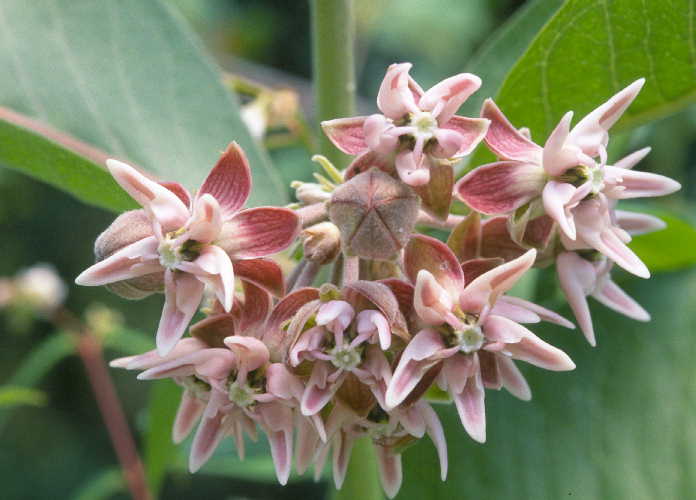This year is a really good year for California milkweed in Dry Creek Park. I've never seen so many as this year (at least since I started paying attention in the last couple of years). Last year was really sad for so many plants, but this year we've seen many wildflowers, even though we are still in a drought.
How do you tell them apart?
The California milkweed has hoods that cover the horn. It is more fuzzy. The narrow leaf and showy milkweeds show their horns. I checked Jepson to see what is the difference of the three. My notes may be somewhat simplistic. |
| Photo from Calflora The narrow leaf shows off its horns and exceeds the hood, but not by much. Check out more Calflora photos |
 |
| Photo from Calflora The California milkweed hides its horns, has a wooly stem. Check out more Calflora pictures |
 |
| From Calflora The showy milkweed shows its horns but has larger leaves than the narrow leaf. Check out more Calflora pictures |
On the trails
We found a couple of narrow leaf milkweed at Sunol park along the gravel beds of the creek. |
| The horns are very evident on the narrowleaf flower. They are enclosed but not hidden by the hood. |
At Dry Creek, the California milkweeds were abundant on the first day of summer!
They were on the high grassy slopes of Mt. Tolman.
 |
| No horns showing here! The five hoods are pointing to the anther head for each flower. |




Enjoyed finding your post about milkweed varieties at Garin / Dry Creek park. Your photos of California milkweed look quite different than the same species identified in the Garin / Dry Creek plant list. Could your pics actually be of A.vestita or A.eriocarpa?
ReplyDeleteThat would be interesting if they are something different than the three that calflora has listed for our area. I will definitely pass on my pictures to someone who is familiar with the milkweeds in our park. Will let you know. What are the characteristics that make you think they might be the two species you mentioned?
DeleteBoth A.vestita and A.eriocarpa are wooly, as in your photos. When not in bloom these species are often confused. However, A.vestita is mostly restricted to the Southern half of the state. A.eriocarpa grows here in Sutter County and looks almost identical to your pics. A.californica has purple flowers but yours aren't purple?
DeleteGot it. Interesting. I will check the other photos that I took that day.
DeleteLooking at the plant lists for the various Regional Parks they seem to use the same stock photo for each species of plant, rather than photos taken at the actual Parks. It may be that yours are the first photos of the Mt. Holman milkweeds to be published and so the error has not been caught until now. I am suggesting that the original identification may have been made off-season when blooms were not present.
DeleteThis comment has been removed by a blog administrator.
ReplyDeleteGot a note from a CNPS person who said "I agree that it is Asclepias californica. It’s true that that species is usually more purple, but color is one of the most variable things in flowers and therefore not a good thing to base an identification on. It’s also possible that the drought is having some effect on the color. I expect it takes a lot more energy to produce darker colors, so the plant may just be cutting corners where it can.
ReplyDeleteAsclepias vestita is a shorter plant and the horns would be more visible. There are some similarities in your photos to Asclepias eriocarpa, but the habitat is wrong (dry barren places) and it’s not likely to occur around here, and especially not in grassland. "